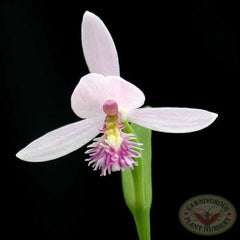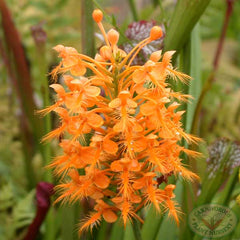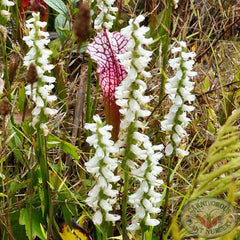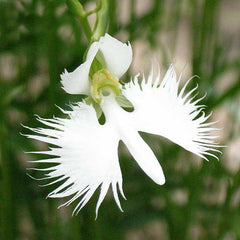
Growing Tips for Bog Orchids



Bog Orchids - Pogonia, Calopogon, Spiranthes, Platanthera, Habenaria
Soil: 1:1:1:1: peat:sand:chopped sphagnum:pine bark fines.
Container: 6+" plastic pot.
Watering: moist to well drained.
Light: full to part sun.
Temperature: warm summer, cool winter-tolerates frost.
Humidity: medium.
Location: outdoors, greenhouse.
Dormancy: yes.
Habitat
Bog Orchids are Hardy Orchids that grow naturally in the bogs, pocosins and fens of primarily eastern N. America. They typically prefer open and sunny wetland habitats where the peat/sand soil is consistently damp. Most species grow across multiple hardiness zones from Zones 3 to 9 making them adaptable from deep winter freezes to milder temperate winters. They frequently grow in association with sphagnum moss and carnivorous plants, making them excellent companions for the bog garden.
Culture
Bog Orchids grow in the same conditions as carnivorous plants. They prefer consistently damp, peaty, sandy soil and full to partial sun. They typically do not need mycorrhizal (symbotic fungal) associations like other terrestrial orchids. Grow Bog Orchids as you would Sarracenia. The standard CP soil mix of peat and sand works well. I find that they grow better with chopped sphagnum and pine bark fines added to their soil. Mature bog orchids prefer a wider large pot of 6-8+” (15-20cm) because their roots usually grow long and shallow. Most do best when the soil is evenly moist, but not soaking wet. They can tolerate very wet, even submerged conditions, for weeks at a time. Let the soil become drier; yet remain somewhat moist, during winter dormancy. Water from below with mineral-free water. The tray method works very well. Stand the pot in a tray or saucer and keep about 1” (2.5cm) of water in it at all times during the growing season. Bog orchids prefer full sun, growing in and among grasses and other bog plants. Provide a winter mulch of 4-6" of weed free hay or pine needles. Best flowering occurs in mature, undisturbed plants.
Propagation
Bog Orchids can be propagated from mature rhizome divisions, by separating individual rooted shoots. Seeds do not need mycorrhizal associations. Some need stratification (cool, damp winter). Tissue Culture works well for clones.
Dormancy
A winter rest period is required of mature plants. As day length and temperature diminish the plant will slow its growth and die back, starting at the tops. Cut back on winter watering, but allow the soil to stay moist. Provide cooler temperatures during dormancy. A cold porch or garage may work well.
Feeding
Bog orchids do not need fertilization, and will not tolerate rich soil fertility. They can, however, benefit from low doses (<5%) of commercial orchid fertilizers.
Other Considerations
Remove the flower spike after flowering. The development and setting of seeds requires a lot of energy. Stronger plants will result, if this energy goes into leaves and roots.
Bog Orchids are best grown outdoors, and are not good house or terrarium plants.
Repot every few years in a fresh CP soil mix, since the peat breaks down and can create poor drainage.
Plant in the center of the pot with the crown about 1/2" below the surface. This is a good time to divide any multi-bud plants. Repotting is best done in the Fall or very early Spring, before active growth begins. A soil top dressing of living Sphagnum Moss works well. Repotting or transplanting may set flowering back by one year.



